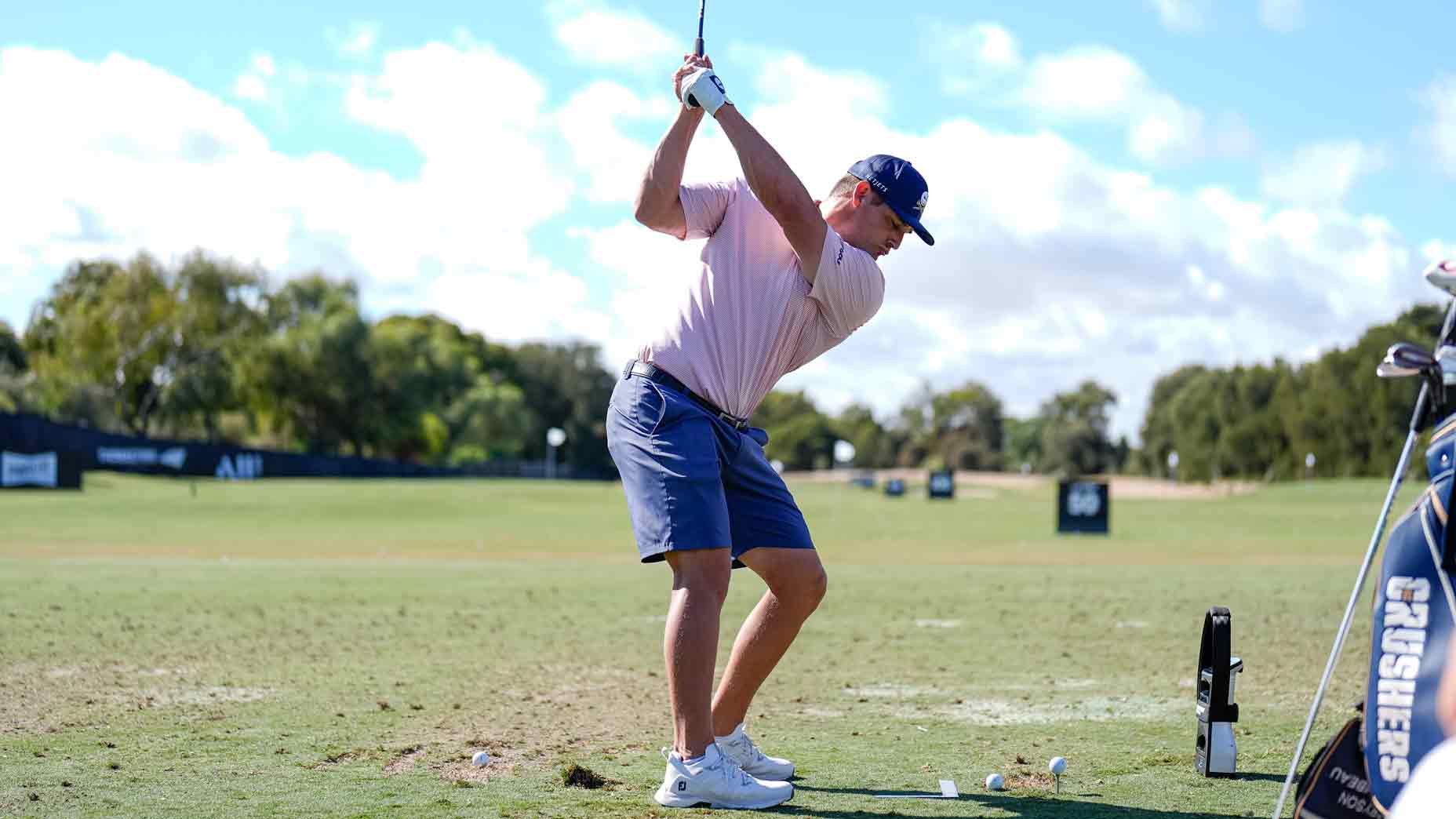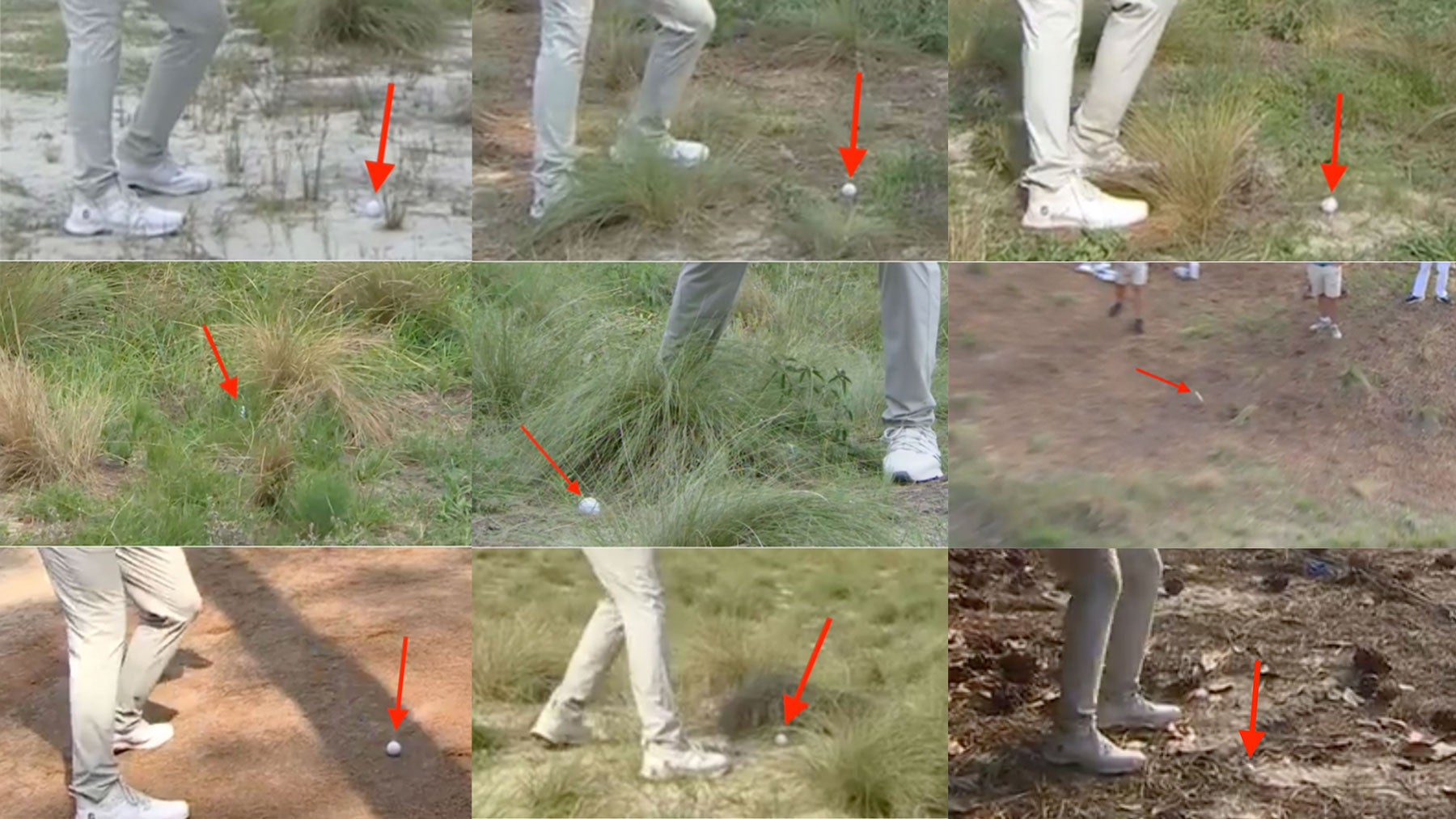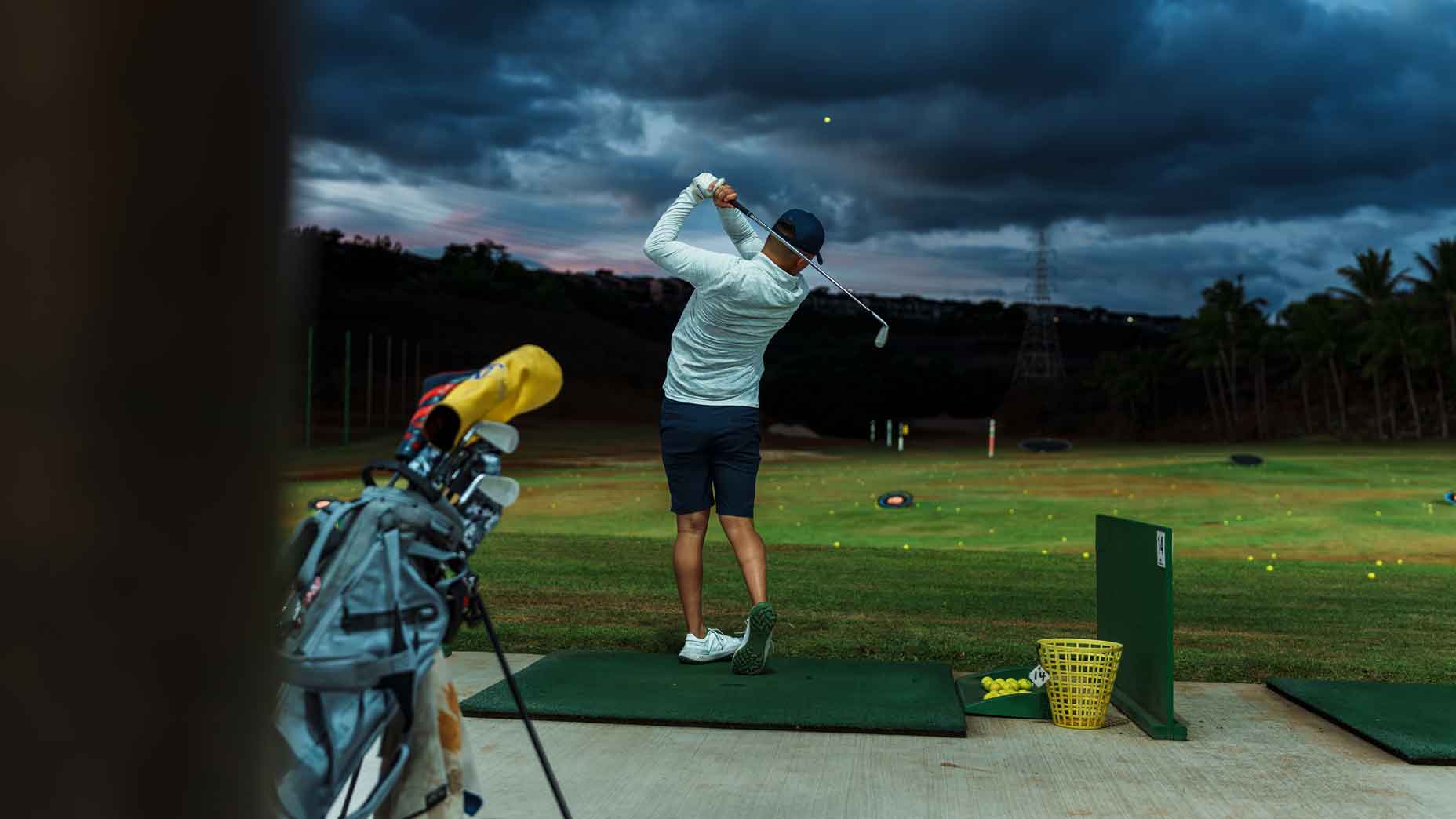2 (simple!) things Bryson DeChambeau says will improve your putting
- Share on Facebook
- Share on Twitter
- Share by Email

Just a reminder from Bryson DeChambeau to uncomplicate your putting.
Getty Images
Welcome to Shaving Strokes, a GOLF.com series in which we’re sharing improvements, learnings and takeaways from amateur golfers just like you — including some of the speed bumps and challenges they faced along the way.
If there’s one area of the game of golf that can make or break a player, it’s putting.
Even when you’re not hitting the ball great with your driver or with your irons, if you’re an above-average putter, you can save strokes and give yourself more opportunities to score each round.
Why Bryson DeChambeau purposely mishits some shotsBy: Nick Dimengo
Nobody knows that more than this year’s U.S. Open champ, Bryson DeChambeau, who has seen his putting gradually improve over the past year or so.
Despite ranking in the middle of the pack during the LIV Golf season, DeChambeau steps up his game when the pressure is the highest: major tournaments. And his secret sauce isn’t anything crazy — so take a look below at two simple things that have helped his putting (which are easy-to-use even for a high-handicapper).
Bryson DeChambeau’s simplified putting tips
While DeChambeau is best known for crushing drives and having distance that many players (including most pros) don’t have, that’s not the only part of his game he excels in. On occasion, he’s shown the ability to be a great putter as well.
When you dive into some stats, in the events that DeChambeau putts well, he usually contends.
Bryson DeChambeau says 1 thing stresses him out on the practice rangeBy: Nick Dimengo
For instance, at this year’s U.S. Open, he finished 12th in strokes gained: putting. During this year’s PGA Championship (where he finished 2nd), he ranked 19th in strokes gained: putting. And at this year’s Masters (a T6 finish), DeChambeau was +0.41 in the same statistical category — not a huge gain, but still a differentiator given his ability to bomb his tee shots.
So what’s been the key to his improved putting stroke? It’s not as complicated as you might think.
“I worked really hard and actually found something the week of Valhalla with my putting,” DeChambeau said at Pinehurst during his U.S. Open victory. “From there, I’ve just been smooth sailing, trying to retain that same feeling that I’ve had, not tinkering with it too much.
“I know it’s a really vanilla answer and you’re probably looking for more, but it’s more the same of what I’m doing. It’s a function of straight back, straight through, make sure the face angle is square to that target line for as long as possible and just controlling my speed profile.”
Despite all the complexities of putting — and all the stresses it can cause a golfer — this year’s U.S. Open champ says that simply getting back to basics has helped him the most. He’s also keen on using a Foresight launch monitor on the green before each round to give him instant feedback in the short game.
“That’s really all I’m focused on to make sure I’m hitting the right distance putts,” he adds. You see me working on that every day. Everybody sees it. So I’m probably one of the only people that uses a Foresight on the greens for practice. It really helps get my feel dialed in.”
In addition to the above, DeChambeau says that, after this year’s Masters, there was a bit of an epiphany with his putting — which helped build his confidence over the past few months.
Did Bryson DeChambeau get lucky at the U.S. Open? A forensic investigationBy: Alan Bastable
“As I was going through impact, I was essentially turning my shoulders open, which was allowing me to pull putts. I was pulling everything,” he said. “It seems so simple now, but under the gun and under pressure your body sometimes reacts in ways you can’t fully control. So really focusing on keeping my shoulder line square and keeping that putter face square through impact was huge. That’s what helped me to my success at [the PGA Championship] at Valhalla.”
While the two simple tips have helped DeChambeau improve his putting over the past half-year or so, it’s also been the amount of work he’s put into the short game that’s paid dividends — helping him understand the fine intricacies of putting.
“What makes me comfortable on these greens is years of practice. You’ve just got to practice and get comfortable with the grain and how it’s moving it, the roll-out numbers if you’re downgrain, into the grain, what that does. It takes a while to get comfortable with that.
“That’s the reason why I’m pretty comfortable — because I’ve done it for a long time now. If I was 22, 21, it would be a different situation.”

Foresight GC3 Essentials Plus Bundle
View Product

Foresight Sports Essential Putting Analysis Add-on
View Product
Latest In Instruction

Nick Dimengo
Golf.com Editor












